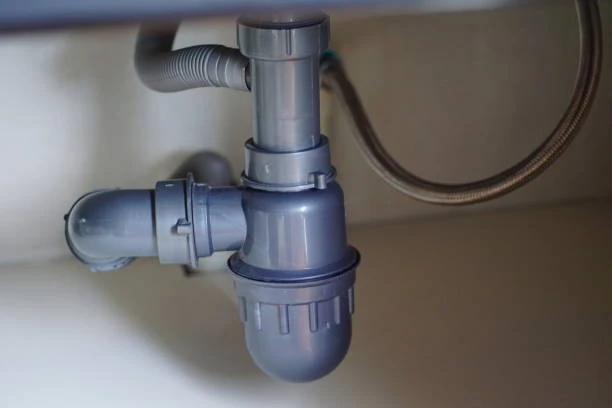The High-Density Polyethylene HDPE pipe market has witnessed substantial growth in recent years, driven by an increasing demand for efficient and durable piping solutions across various sectors. This article provides a comprehensive overview of the HDPE pipe market, including its scope, applications, and forecasts from 2018 to 2025.

Understanding HDPE Pipe
What are HDPE Pipe?
High-Density Polyethylene pipes are made from thermoplastic polymers characterized by high strength and durability. HDPE pipes are lightweight, flexible, and resistant to corrosion, making them ideal for various applications, including water distribution, sewage management, and gas supply.
Key Characteristics of HDPE Pipe
- Durability: HDPE pipes can last over 50 years, even in harsh environments.
- Chemical Resistance: They resist a wide range of chemicals, making them suitable for various industrial applications.
- Flexibility: Their ability to bend makes HDPE pipes ideal for installations in complex terrains.
- Low Maintenance: The smooth surface of HDPE reduces friction and the risk of clogs, leading to lower maintenance costs.
Market Overview
Current Market Landscape
The HDPE pipes market has seen significant growth due to urbanization, increased infrastructure development, and the need for efficient water management systems. According to market research, the global HDPE pipes market is expected to grow at a CAGR of approximately 5% from 2018 to 2025.
Factors Driving Market Growth
- Urbanization: Rapid urbanization has led to increased demand for water supply and sewage systems, driving the adoption of HDPE pipes.
- Infrastructure Development: Governments are investing heavily in infrastructure projects, creating a demand for reliable piping solutions.
- Sustainability Initiatives: The global shift towards sustainable practices has led to a preference for HDPE pipes due to their recyclability and lower environmental impact.
- Technological Advancements: Innovations in manufacturing processes and installation techniques, such as trenchless technology, have increased the efficiency and appeal of HDPE pipes.
Scope of the HDPE Pipe Market
Applications of HDPE Pipe
The HDPE pipes market is segmented based on applications, which include:
- Water Supply: HDPE pipes are extensively use for municipal water supply systems due to their durability and resistance to corrosion.
- Sewage and Waste Management: Their smooth interior surfaces reduce friction and clogging, making HDPE pipes ideal for sewage systems.
- Gas Distribution: HDPE pipes are commonly use in natural gas distribution due to their ability to withstand high pressures and environmental stress.
- Telecommunications: The demand for high-speed internet and telecommunications infrastructure has increased the use of HDPE pipes for protecting fiber optic cables.
- Industrial Applications: Industries such as mining, agriculture, and chemical processing utilize HDPE pipes for various purposes, including transporting liquids and slurries.
Regional Analysis
The HDPE pipes market is geographically segmente into North America, Europe, Asia-Pacific, Latin America, and the Middle East & Africa.
- North America: The region holds a significant share of the market due to advanced infrastructure and increased investments in water management systems.
- Europe: Stringent environmental regulations and a focus on sustainable practices drive the demand for HDPE pipes in this region.
- Asia-Pacific: Rapid urbanization and industrialization in countries like China and India contribute to the fastest growth in this region.
- Latin America and Middle East & Africa: These regions are expecte to witness steady growth due to increasing infrastructure development and urbanization.
Market Forecast (2018 – 2025)
Growth Projections
The global HDPE pipes market is projecte to grow significantly over the forecast period. Factors such as increase urbanization, government initiatives for infrastructure development, and rising environmental awareness are expected to boost the market.
- 2018-2020: The market witnessed steady growth as countries invested in water supply and sewage systems.
- 2021-2023: The market is expecte to accelerate as new technologies in HDPE pipe manufacturing and installation gain traction.
- 2024-2025: Continued demand for HDPE pipes is anticipate due to ongoing infrastructure projects and sustainability initiatives.
Key Trends Shaping the Future
- Smart Technology Integration: The adoption of IoT and smart sensors in HDPE pipe systems will enhance monitoring and maintenance, ensuring efficient water distribution and leak detection.
- Recycling and Sustainability: The trend towards using recycled materials in HDPE pipe manufacturing will continue to grow, aligning with global sustainability goals.
- Customization: Increasing demand for specialized HDPE pipes designed for specific applications will drive innovation and customization in the market.
- Emerging Markets: Developing regions, particularly in Asia-Pacific and Africa, will experience rapid growth due to urbanization and infrastructure investment.
Challenges Facing the HDPE Pipe Market
Despite the positive outlook, the HDPE pipes market faces several challenges:
- Competition from Alternative Materials: HDPE competes with other materials like PVC and ductile iron, which may offer similar benefits.
- Regulatory Compliance: Manufacturers must adhere to stringent regulations regarding quality and environmental standards, which can increase costs.
- Raw Material Price Volatility: Fluctuations in the price of petroleum, a key raw material for HDPE production, can impact production costs and pricing strategies.
Conclusion
The HDPE pipes market is poised for significant growth from 2018 to 2025, drive by urbanization, infrastructure development, and a focus on sustainability. As technological advancements continue and emerging markets expand, HDPE pipes will play a crucial role in meeting the increasing demand for efficient and durable piping solutions.
FAQs
- What are HDPE pipes primarily use for?
- HDPE pipes are mainly use for water supply, sewage management, gas distribution, telecommunications, and various industrial applications.
- How long do HDPE pipes last?
- HDPE pipes typically have a lifespan of over 50 years, depending on the conditions of use and maintenance.
- Are HDPE pipes environmentally friendly?
- Yes, HDPE pipes are recyclable and produced with less energy than many alternative materials, making them a sustainable choice.
- What is the expected market growth rate for HDPE pipes?
- The global HDPE pipes market is expecte to grow at a CAGR of approximately 5% from 2018 to 2025.
- What challenges does the HDPE pipe market face?
- Challenges include competition from alternative materials, regulatory compliance issues, and fluctuations in raw material prices.


















